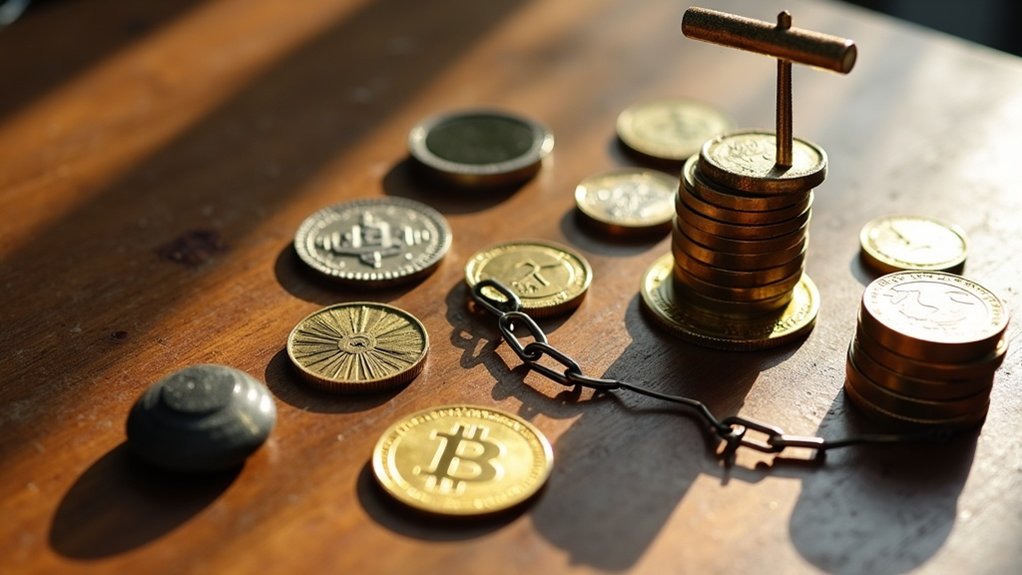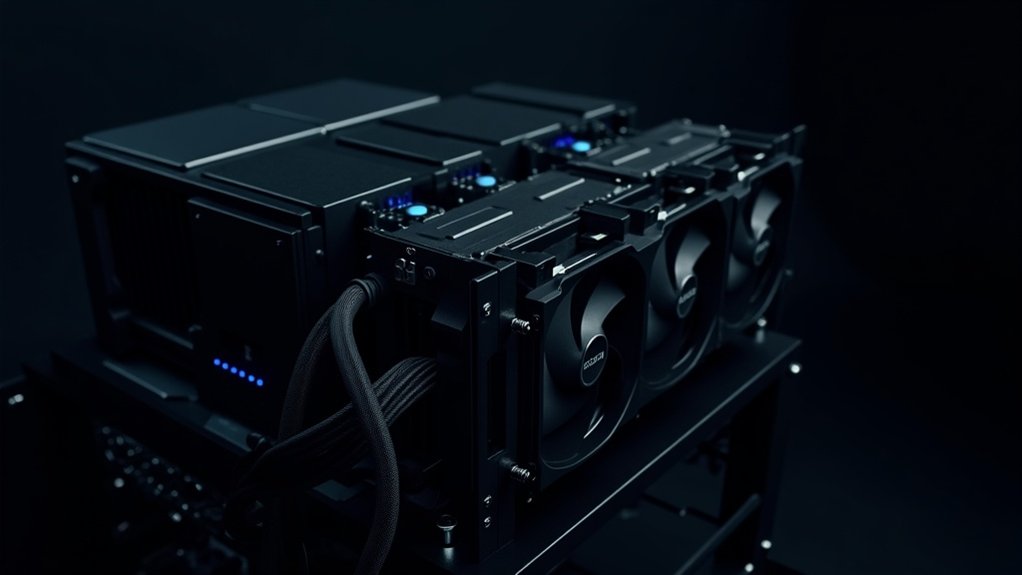Bitcoin’s blockchain is a digital ledger distributed across thousands of computers worldwide. It records all transactions chronologically in linked blocks that can’t be altered once added. No central authority needed—just pure math and consensus keeping everyone honest. Each block contains verified transactions, timestamps, and cryptographic references to previous blocks. The system eliminates middlemen while preventing double-spending through its decentralized structure. This mathematical marvel has transformed how we think about trust in financial systems.
At the heart of Bitcoin lies a revolutionary system—blockchain technology. This digital ledger records every single Bitcoin transaction ever made, distributed across thousands of computers worldwide. No central authority needed. Just pure, mathematical consensus keeping everyone honest.
Bitcoin’s blockchain: the trustless ledger that eliminated middlemen and revolutionized finance through pure mathematical truth.
The blockchain consists of blocks—packages of transaction data cryptographically linked together. Each block references the one before it through a unique hash, creating an unbreakable chain. Try to tamper with any transaction, and you’ll need to recalculate every subsequent block while controlling most of the network‘s computing power. Good luck with that. The immutable ledger ensures that once data is recorded, it cannot be altered or deleted.
Nodes maintain copies of the entire blockchain, constantly verifying and relaying information. Miners—special nodes with serious computing power—validate transactions by solving complex puzzles. This “Proof of Work” system prevents double-spending and determines which block joins the chain next. The winner gets Bitcoin as a reward. Nice work if you can get it.
Bitcoin’s blockchain uses something called the UTXO model. Forget traditional bank accounts with balances. Instead, imagine digital cash represented as Unspent Transaction Outputs. When you spend Bitcoin, you’re consuming these UTXOs and creating new ones for the recipients. The entire network tracks these spendable outputs, preventing anyone from spending the same Bitcoin twice.
The network operates through a simple cycle: users initiate transactions, miners verify and package them into blocks, and nodes spread this information across the network. The protocol automatically adjusts mining difficulty every 2016 blocks to maintain a steady 10-minute block creation time. Each block contains a timestamp field that proves when the data was entered, ensuring chronological ordering of transactions. Elegant engineering, really.
What makes blockchain truly revolutionary is its immutability and transparency. Every transaction sits in plain view, verified by mathematics instead of trust. The decentralized nature means no single point of failure exists. No banks, no governments, no middlemen taking a cut or telling you what you can do with your money. Just code and consensus. That’s Bitcoin’s blockchain in action. The peer-to-peer network enables direct transactions between users without requiring trusted intermediaries, fundamentally changing how digital value can be transferred.
Frequently Asked Questions
How Do I Buy Bitcoin?
To buy Bitcoin, people first choose a platform like Coinbase or Binance. They create an account, complete identity verification (government ID required, no way around it), and connect a payment method.
Bank transfers are cheaper; credit cards faster but pricier. Once funded, they simply select how much Bitcoin to purchase and execute the trade.
The Bitcoin lands in their exchange wallet. Some folks move it to personal wallets afterward. Pretty straightforward, really.
What Are the Environmental Impacts of Bitcoin Mining?
Bitcoin mining guzzles electricity – about 150 TWh annually.
Like having a small country dedicated to digital money. Most U.S. operations run on fossil fuels, spewing CO₂ comparable to Qatar’s entire emissions. Each transaction? Roughly 700kg of carbon dioxide. That’s 1,500km in your car. For one transaction.
The industry is trying, though. Over half now uses renewables.
But mining still pollutes air, consumes swimming pools of water, and creates noise pollution. Communities aren’t thrilled. Some countries have banned it entirely.
Can Bitcoin Transactions Be Traced?
Yes, Bitcoin transactions can be traced. Every transaction is recorded on the public blockchain—permanently.
Blockchain explorers let anyone follow the money trail by searching transaction IDs or addresses. Professional tools from companies like Elliptic take it further with clustering techniques that link addresses to real identities.
Those mixer services criminals love? Often not as anonymous as advertised. Law enforcement has tracked down plenty of Bitcoin criminals.
Privacy? Not Bitcoin’s strong suit.
Is Bitcoin Legal in All Countries?
No, Bitcoin isn’t legal everywhere.
Some countries fully embrace it (France, Italy, South Korea), while others have complex regulatory frameworks (EU nations, Switzerland).
Then there’s the restrictive crowd—Namibia bans crypto exchanges outright, and Zimbabwe’s situation is a legal mess.
Several countries exist in a gray zone with no formal regulation but no explicit prohibition either.
The legal landscape keeps shifting too. Regulatory whiplash is basically a feature, not a bug.
How Volatile Is Bitcoin Compared to Traditional Currencies?
Bitcoin’s volatility dwarfs traditional currencies. Period.
While forex pairs typically see daily volatility under 1%, Bitcoin’s standard deviation hits around 2.1% in 2025 (down from 5.3% in 2021).
Traditional currencies don’t swing wildly between $80,000 and $100,000 in four months. Bitcoin does. Its price patterns are starting to resemble crude oil more than hyper-volatile altcoins, but still.
When it comes to stability? Fiat currencies win by a landslide.









